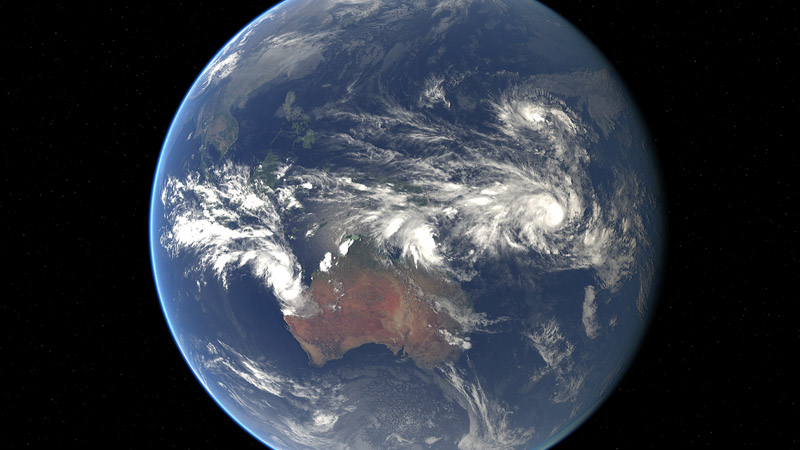Every year, meteorologists pull together a state of the climate report.
Thomas Karl, director at NOAA, the US agency that coordinates data and analysis from all over the world, describes it as an “annual physical” of the Earth’s climate system.
This weighty tome for 2015 is out and it’s packed with records. Global warming and the El Nino weather system combined to make for some extreme conditions.
“Last year’s El Niño was a clear reminder of how short-term events can amplify the relative influence and impacts stemming from longer-term global warming trends,” said Karl.
Here are the top five takeaways.
1. Heat
It was the warmest year on record by a long way, with global average temperatures more than 1C higher than pre-industrial times.
At a national level, 12 countries including Russia and China smashed annual records. More than 1,000 people died in Pakistan’s worst heatwave since 1980.
The terrestrial Arctic was 2.8C hotter than in 1900, with shrinking sea ice forcing walrus herds to haul out on land.

2. Drought
El Nino did some strange things to the water cycle. On a global scale, soils dried out, with a 75% increase in the area of land affected by severe drought.
In Indonesia, it contributed to devastating seasonal peat and forest fires, covering the region in a toxic haze. Emissions from tropical Asian biomass burning were almost triple the 2001-2014 average.
Within that trend, there were pockets of the opposite extreme. Heavy rains caused severe flooding in Paraguay, Bolivia, and southern Brazil.

El Nino fanned the flames of devastating forest fires across Indonesia (Flickr/CIFOR/Rini Sulaiman)
3. Greenhouse gases
As long as power stations are running on coal and cars on petrol, carbon dioxide levels in the air are on an upward trend.
In 2015, the annual average passed 400 parts per million at Hawaii’s Mauna Loa observatory for the first time. There is some seasonal fluctuation, as trees grow and shed their leaves, but it’s not going back into the 300s in our lifetimes.
Methane, nitrous oxides and other greenhouse gases also intensified.
4. Ice
Glaciers retreated, on balance, for the 36th year in a row. Across the Northern Hemisphere, late spring snow cover was the second lowest in the 49-year record.
More than half the surface of the Greenland ice sheet melted, for only the second time ever measured.
The Antarctic presented a more mixed picture, with sea ice levels swinging from record highs in May to record lows in August. Land temperatures were cooler than the 1981-2010 average across most of the continent.

Athabasca Glacier, Canada (Flickr/speedygroundhog)
5. Oceans
It wasn’t just warm over land; sea surface temperatures hit a record high globally.
The Arctic Ocean ranged between 0 and 8C warmer than average. In the Eastern Pacific, where El Nino is born, it was 2C across the year.
Heat in the ocean and mean sea levels continued to rise.

NOAA Climate.gov, Photo by Roberto Mangual
